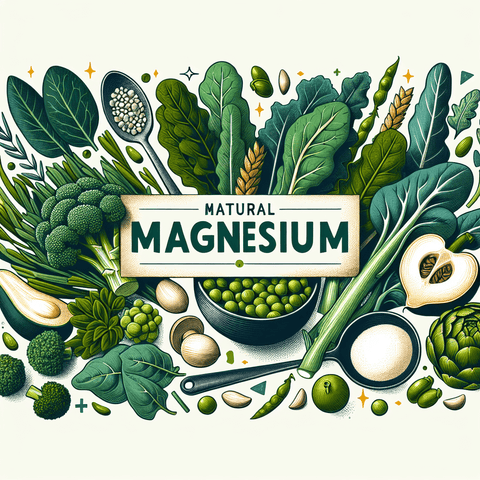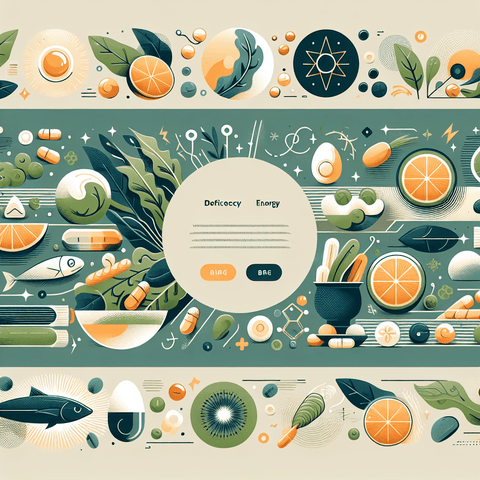Introduction
Magnesium is one of the most vital minerals for the human body, participating in over 300 enzymatic processes. It plays a crucial role in muscle and nerve function, maintaining heart rhythm, supporting immune health, and building strong bones. Despite its importance, magnesium deficiency is relatively common, particularly in populations consuming a diet low in whole foods and high in processed items. The good news? Nature provides an abundance of magnesium-rich vegetables that can naturally boost magnesium intake without the need to rely solely on supplements.
Vegetables are not just nutrient-dense, but also low in calories and high in fiber, making them one of the healthiest sources of essential minerals, including magnesium. By turning to mother nature’s bounty in the form of leafy greens and a variety of other vegetables, individuals can significantly enhance their dietary magnesium intake and support overall health.
This article is crafted to serve as a comprehensive resource for those seeking to discover which vegetables contain the most magnesium and how they can be utilized as natural nutritional supplements. Whether you're transitioning to a plant-based diet or complementing your supplementation strategy, understanding these vegetables’ role in magnesium intake can be transformative for your health journey.
I. Magnesium-Rich Vegetables Relevant to Nutritional Supplements
A diet rich in magnesium can offer a multitude of health benefits. While magnesium supplements are a viable option for addressing deficiencies or enhancing health, introducing magnesium-rich vegetables into your daily diet is a more natural pathway that often comes with additional nutrients like fiber, antioxidants, and phytochemicals. These nutrients work synergistically to support absorption and utilization of magnesium within the body.
Some of the vegetables highest in this essential mineral include spinach, Swiss chard, kale, collard greens, broccoli, artichokes, peas, okra, and pumpkin seeds. Although pumpkin seeds are technically seeds, they’re often included in vegetable diets and recipes, particularly in plant-based and Mediterranean-style eating plans. These vegetables offer adequate quantities of magnesium, sometimes rivaling or exceeding the levels found in over-the-counter nutritional supplements.
Several factors influence the magnesium content found in vegetables. Soil quality, farming practices, seasonality, and storage methods all play significant roles. For example, vegetables grown in magnesium-rich soil or through organic farming practices tend to retain higher levels of the mineral. Furthermore, how vegetables are cooked—whether they’re steamed, boiled, or eaten raw—affects the bioavailability of magnesium.
Utilizing food-based sources of magnesium, such as vegetables, also may reduce the risk of consuming excessive amounts. Unlike mineral supplements, which can sometimes lead to gastrointestinal discomfort or interfere with absorption of other essential minerals, whole vegetables tend to provide amounts in line with dietary requirements without risk of toxicity.
Vegetables as natural supplements offer a host of health benefits that extend beyond magnesium. They contain a variety of other micronutrients such as potassium, calcium, and vitamins C and K. For those looking to purchase additional nutritional products, exploring the TopVitamine magnesium support category complements a diet rich in magnesium foods. Combining these resources allows for a flexible approach to maintaining optimal magnesium levels conducive to modern dietary needs.
II. Leafy Greens: Powerhouses of Magnesium and Their Supplementation Benefits
Leafy greens are often celebrated as superfoods, and when it comes to magnesium, they truly deserve the spotlight. These vegetables are loaded with essential nutrients and remain some of the most effective ways to increase dietary magnesium intake naturally. Leafy greens such as spinach, kale, chard, and collard greens are the quintessential magnesium providers in plant-based diets.
Spinach stands out as one of the most magnesium-rich vegetables available. A single cup of cooked spinach delivers approximately 157 mg of magnesium, accounting for nearly 40% of an adult’s recommended daily intake. Not only is spinach rich in magnesium, but it also contains high levels of iron, vitamin K, and folate—nutrients essential for energy production and blood health. Swiss chard follows closely, offering 150 mg of magnesium per cooked cup. Kale and collard greens, though slightly lower, still provide valuable amounts ranging from 30 to 60 mg per cup depending on preparation and freshness.
Bioavailability—the degree to which a nutrient can be absorbed and used by the body—is an important consideration. In the case of leafy greens, the presence of oxalates can bind to magnesium and potentially reduce its absorption. However, this effect can be minimized through cooking methods such as steaming, which helps break down oxalates and improve nutrient availability.
Adding leafy greens to the diet is both simple and versatile. Consider green smoothies with kale, steamed spinach as a side dish, or a Swiss chard stir-fry infused with legumes and spices. Salads made with a medley of leafy greens can also serve as magnesium-boosting meals when topped with seeds or beans. Those aiming for a supplement-like boost may consume several servings of leafy greens spread evenly throughout the day.
For individuals combining food sources with supplement products, leveraging leafy greens alongside high-quality supplementation could be beneficial. Visit the Magnesium Benefits Collection on TopVitamine to explore curated options that harmonize with whole-food sources. This dual approach can enhance absorption and contribute to better long-term health outcomes through nutrient synergy.
III. Magnesium Content in Vegetables: Top Vegetables That Pack a Punch
While leafy greens are at the forefront of magnesium-rich vegetables, many other commonly consumed vegetables pack a surprising magnesium punch. In this section, we’ll rank and compare some of these powerhouses based on their magnesium content and practical culinary applications.
Broccoli is a vegetable known for its versatility and nutritional density. One cup of cooked broccoli contains about 33 mg of magnesium. While not at the very top, its combination of magnesium with vitamins C, K and fiber makes it an excellent component of a mineral-rich diet. Brussels sprouts are another noteworthy contender, offering 32 mg of magnesium per cooked cup. Both of these cruciferous vegetables also contain sulforaphane and other powerful antioxidants that support detoxification and heart health.
Artichokes are particularly magnesium-dense. A single medium boiled artichoke contains roughly 77 mg of magnesium, earning it a rightful place among the top contenders. Its antioxidant-rich profile combined with fiber makes it especially useful for individuals looking to increase their mineral intake while maintaining digestive health.
Green peas also boast a hidden treasure trove of magnesium. One cup of boiled green peas delivers nearly 62 mg of magnesium, along with protein and B vitamins. Their accessibility, even in frozen form, makes them an efficient and cost-effective magnesium source.
Other vegetables worth mentioning include beets (40 mg per cup), potatoes (43 mg for a medium tuber with skin), and carrots (15 mg per cup). Though their magnesium content per serving might not appear high, incorporating a variety allows cumulative benefits across meals. It's also important to remember that magnesium supplementation doesn't necessarily require exotic foods; everyday staples, when eaten in variety and quantity, provide consistent amounts.
Comparing the magnesium density of these vegetables helps create balanced meal plans. Maximum magnesium intake can be achieved through complementary food pairings—for example, a meal of sautéed spinach, roasted artichokes, and boiled peas would deliver a robust magnesium profile. When needed, complement these meals with professional-grade supplements from TopVitamine’s Magnesium Support Section to provide consistency in meeting daily recommendations.
IV. Plant-Based Magnesium Sources: Vegetables as Essential Alternatives to Supplements
As the demand for plant-based nutrition increases globally, individuals are seeking whole-food alternatives to traditional mineral supplements. Vegetables and plant-based sources now serve as viable options for meeting daily magnesium needs without relying solely on synthetic supplementation.
Okra, often overlooked in Western diets, contains around 57 mg of magnesium per cooked cup. It is also rich in mucilaginous fiber, which supports digestion and slows the absorption of sugars. Sweet corn, while high in carbohydrates, provides 33 mg of magnesium per cup and can be a valuable whole-food addition to meals, particularly when combined with legumes or leafy greens. Though not technically a vegetable, pumpkin seeds are often associated with vegetable dishes and are one of the most magnesium-rich plant foods available, offering over 150 mg per ounce.
Combining these foods in daily meals can substantially elevate dietary magnesium. For instance, a plant-based chili made with corn, peas, and pumpkin seeds packs both flavor and mineral density without the common side effects associated with overuse of isolated magnesium supplements.
Natural food sources like these offer additional advantages. They come with dietary fiber, which improves digestive health, and antioxidants, which reduce cellular damage and inflammation. This all-in-one benefit can be difficult to replicate with isolated pills or powders. Nevertheless, supplementation still plays a key role for individuals with specific health considerations.
The magnesium collection at TopVitamine includes formulations designed for rapid absorption, energy enhancement, and muscle function—all while being safe and supported by solid research. Choosing to combine these supplements with plant-based sources creates a holistic strategy for magnesium maintenance, personalized to lifestyle and dietary preferences.
V. Vegetable Magnesium Benefits: Supporting Bones, Muscles, and Heart Health
Magnesium isn’t just another mineral—it’s integral to life. From supporting muscle contractions to enabling proper bone mineralization, its presence is non-negotiable for optimal health. When derived from vegetables, magnesium interacts with a broader matrix of phytochemicals and nutrients, creating a synergy that amplifies its benefits.
One of magnesium’s most well-known roles is in supporting bone health. It works alongside calcium and vitamin D to maintain bone density and structure. Low magnesium levels have been associated with a higher risk of osteoporosis, particularly in postmenopausal women. Vegetables such as kale and broccoli, which are also rich in calcium and vitamin K, contribute a valuable combination of nutrients that promote bone health. Clients interested in bone-focused health solutions might also want to explore TopVitamine’s Vitamin K products, which work synergistically with magnesium in bone metabolism.
In terms of muscle function, magnesium supports neuromuscular transmission and relaxation, making it vital for athletes and individuals experiencing muscle cramps or fatigue. Vegetables rich in magnesium can improve physical performance and reduce cramping, particularly when consumed in conjunction with adequate hydration and mineral-rich meals.
Cardiovascular benefits are another hallmark. Magnesium helps regulate blood pressure by relaxing blood vessels and supporting heart rhythm. Vegetables, with their high potassium and low sodium content, complement magnesium's heart-protective qualities. Clinical studies have demonstrated that higher intakes of magnesium-rich vegetables correlate with a lower risk of cardiovascular disease and stroke. This triple synergy—magnesium, potassium, and fiber—is particularly beneficial and illustrates why real food often delivers better long-term health results than synthetic interventions alone.
Nutritional supplement users can maximize these benefits by integrating these vegetables into their protocol and evaluating synergistic options like Omega-3 supplements or vitamin D from TopVitamine to reduce inflammation and support cardiovascular health.
VI. Dietary Magnesium Vegetables: Optimizing Your Intake for Better Well-Being
Incorporating magnesium-rich vegetables into daily meals need not be complicated. With some thoughtful planning, variety, and creativity in cooking, you can meet your daily magnesium needs consistently—and deliciously.
The recommended daily magnesium intake for adults ranges from 310 to 420 mg, depending on age, gender, and physiological state. To reach these values through food alone, a varied diet of between five to six servings of magnesium-rich vegetables/pumpkin seeds per day is typically sufficient. Use leafy greens as a base in salads, artichoke hearts in dips, steamed peas in grain bowls, and roasted Brussels sprouts with garlic for added flavor and functionality.
For example, a one-day magnesium-boosting meal plan could look like:
- Breakfast: Smoothie with spinach, banana, chia seeds, and almond milk (approx. 115 mg)
- Lunch: Quinoa salad with kale, diced sweet corn, and avocado (approx. 135 mg)
- Dinner: Stir-fry with broccoli, tofu, Swiss chard, and pumpkin seeds (approx. 200+ mg)
Individuals with dietary restrictions—such as those avoiding legumes or nuts—can still achieve adequate magnesium through strategic vegetable planning. Always cook cruciferous and leafy vegetables lightly to retain bioavailability. Avoid long boiling sessions which can leach minerals into the water and reduce nutrient density.
When optimizing with fortified foods or supplementation, a balanced blend of dietary and supplemental intake works best. Explore the TopVitamine magnesium line to find products that support your individual health goals. This method ensures consistency and prevents micronutrient imbalances stemming from restricted or uniform diets.
Conclusion
Vegetables provide a powerful, natural way to meet your magnesium needs while supporting a multitude of health functions ranging from bone integrity to muscle performance and cardiovascular wellness. Spinach, Swiss chard, kale, artichokes, peas, and broccoli are among the top contenders when it comes to magnesium content and bioavailability. Through careful cooking, consistent inclusion in meals, and pairing with synergistic nutrients, vegetable-based magnesium intake can rival traditional supplements in both absorption and health outcomes.
While effective supplementation has its place, especially for those with diagnosed deficiencies or increased demands, choosing to integrate these magnesium-rich vegetables into your diet is a sustainable, affordable, and side-effect-free way to improve your health. For those interested in finding complementary supplements, browse the Magnesium Benefits Collection at TopVitamine for responsibly formulated options.
Start today—pick your favorite magnesium-packed veggie, try a new recipe, or consult a healthcare provider for a complete nutrition protocol that includes both whole foods and clean, effective supplements.
Q&A Section
Q: Which vegetable has the most magnesium?
A: Spinach ranks highest among leafy greens, with roughly 157 mg of magnesium per cooked cup—more than a third of the daily requirement for adults.
Q: What are some other top vegetables for magnesium?
A: Swiss chard, kale, collard greens, artichokes, green peas, broccoli, Brussels sprouts, and okra are all excellent choices.
Q: Can I meet my magnesium needs through vegetables alone?
A: Yes! With a balanced diet containing a variety of magnesium-rich vegetables and seeds, many people can meet their magnesium requirements without the need for supplements.
Q: What about vegetables' bioavailability of magnesium?
A: Leafy greens may contain oxalates that reduce magnesium bioavailability, but steaming them enhances absorption. Rotating your vegetable choices also maximizes benefits.
Q: Should I still consider supplements?
A: Individuals with increased nutrient needs or absorption issues may benefit from magnesium supplements. You can find trusted options in the TopVitamine magnesium collection.
Important Keywords
- Magnesium-rich vegetables
- Top magnesium foods
- Leafy greens magnesium content
- Spinach magnesium levels
- Plant-based magnesium sources
- Best vegetables for magnesium
- Vegetable magnesium supplements
- Natural magnesium intake
- Magnesium for bone health
- Magnesium dietary recommendations



